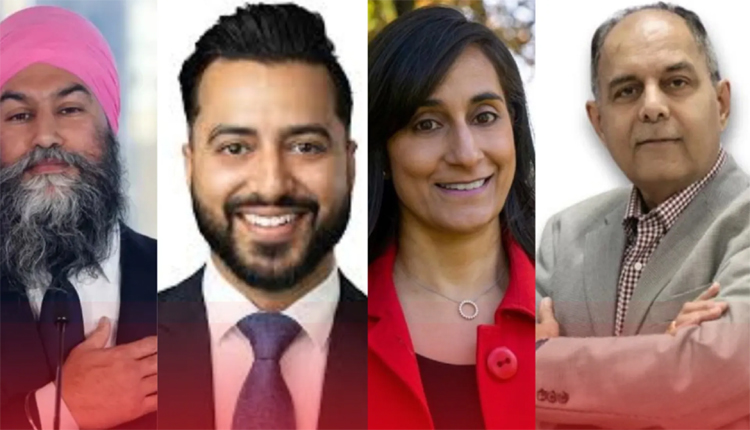Ottawa: New Prime Minister Mark Carney of Canada has announced a lean, 24-member Cabinet with four leaders of Indian origin assuming key portfolios, marking the rising clout of the country’s 1.6 million-strong Indian diaspora. Installed on May 13 at Rideau Hall, the Cabinet has Anita Anand, Kamal Khera, Maninder Sidhu, and Shafqat Ali on its list, whose multiplicity of portfolios highlights Canada’s pledge to diversity and competence.
Anita Anand, 58, born to Punjabi and Tamil parents in Nova Scotia, became Canada’s first Hindu female Foreign Affairs Minister, swearing in on the Bhagavad Gita. Once a law professor at the University of Toronto, Anand’s CV boasts incumbencies as Minister of National Defence and Public Services, where she led Canada’s COVID-19 vaccine distribution efforts. “We’ll build a stronger economy, not with negativity, but with unity,” she posted on X, reflecting her focus on global trade and diplomacy amid U.S. tensions. Her appointment has drawn praise for elevating Indian-origin representation on the world stage.
Kamal Khera, 36, a Delhi-born registered nurse, steps into the Health Minister role, one of the youngest women ever elected to Parliament. Elected in 2015 for Brampton West, Khera’s oncology experience and volunteer work during the COVID-19 pandemic inform her patient-first approach. “I’ll bring a nurse’s care to this role,” she said on X, vowing to tackle healthcare access and mental health reform. Her rise resonates in Brampton, a hub for Canada’s Punjabi community, which makes up over 4% of the population.
Maninder Sidhu, from Brampton East, becomes International Trade Minister. As a Liberal member of Parliament since 2019, Sidhu’s legal background and community organising make him well-positioned to guide Canada through its trade challenges, especially with India and the United States. His position is essential as Canada works to diversify markets during global economic change. Sidhu’s appointment also represents the political power of Brampton’s South Asian voters, an important constituency in recent elections.
Shafqat Ali, a lesser-known but steady Liberal MP from Brampton Centre, assumes the Presidency of the Treasury Board. Elected in 2021, Ali’s expertise in financial oversight and his roots in Pakistan’s Punjabi community add depth to the Cabinet’s economic strategy. While managing government spending, Ali faces pressure to deliver on Carney’s promise of fiscal discipline while addressing inflation concerns. His inclusion highlights the diversity within Canada’s South Asian political leadership.
Carney, the former governor of the Bank of Canada, spoke of a “tight, experienced team” in his X post, with the Cabinet’s 13 men and 11 women reflecting a streamlined approach compared to Justin Trudeau’s 37-member team. The Indian-origin ministers, all Liberals, bring a combination of academic expertise, frontline experience, and community connections from Ontario’s Greater Toronto Area, which is home to a sizeable Indian population. Their positions align with Carney’s priorities: economic growth, healthcare reform, and stronger international relations.
The political rise of the Indian diaspora comes as no shock. In 2016, Parliament declared Punjabi Canada’s third official language, recognising the community’s presence. Former Trudeau cabinets had as many as four Indian-origin ministers, including Harjit Sajjan and Navdeep Bains, who paved the way for diversity. A social media frenzy, especially on X, has welcomed the quartet as a “powerhouse,” with people pointing out Anand’s landmark oath as a cultural first.
But troubles are on the horizon. Anand has to navigate tense India-Canada relations, while Khera has to answer for healthcare wait times. Sidhu and Ali will have to deal with trade rows and fiscal pressures. Nevertheless, their appointments reflect Canada’s acceptance of its multicultural mosaic, with the Indian-origin ministers set to chart the country’s destiny on the international stage.



Comments are closed.